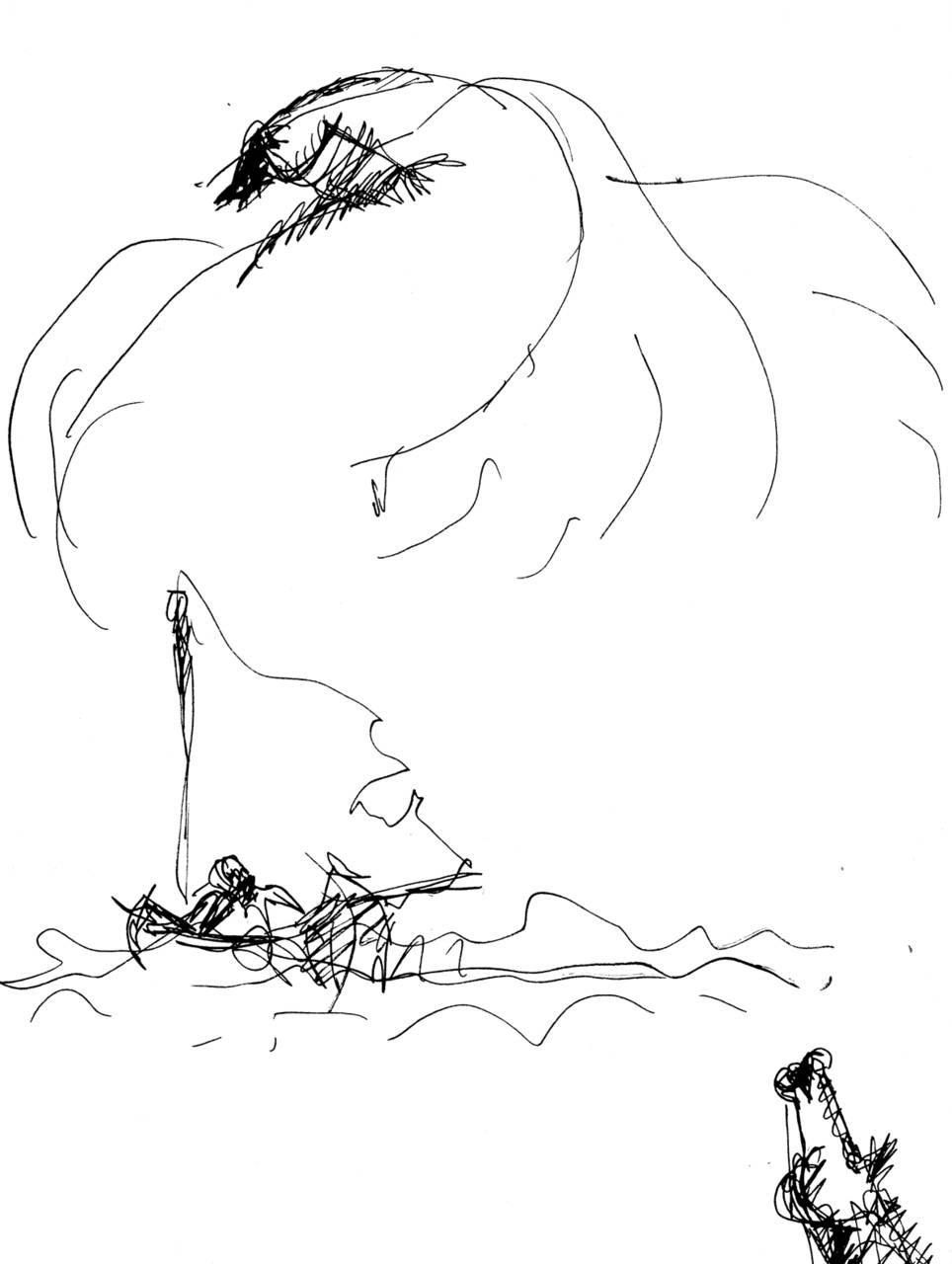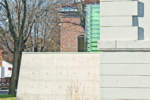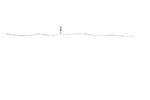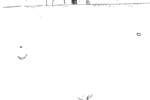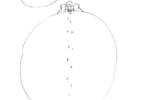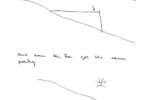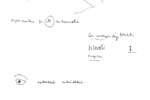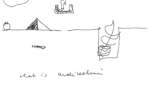Sverre Fehn between type of use and construction
On 6 March the new National Museum of Architecture opened in Oslo: the work of Norwegian master Sverre Fehn, winner of the Pritzker Prize in 1997, the institution is housed by the neoclassical building that once served as headquarters of the Bank of Norway. To provide space for the new activities the eighty-year old, recently deceased architect has not only transformed Heinrich Grosh’s plan from 1830 with taste and measure: to avoid interfering overly with the old structure, he has designed the areas dedicated to temporary exhibitions as an independent pavilion, an addition to the existing premises. An act of submission and respect towards the neoclassical architect and, among other things, author of the historical premises of the University of Oslo (1841-56). But the opening has also been a more personal and private event, as a lifelong dream of Sverre Fehn has here come true: this is the first realization for, and the first direct commission of, the public administration of his own city. With a career that commenced in 1956, and that has seen many and important competitions for museum projects (of which unfortunately only a few have been realized) the Norwegian master has, in actual fact, not had many opportunities to build in Oslo. The new arrangement of the Bank of Norway is, by full rights, part of the long sequence of projects which have made Sverre Fehn so popular among critics. Indeed, it also represents an ideal conclusion, as the master died on 23 February 2009, almost exactly one year after that 6 March. A testament in the form of a built architecture, as those left by other great Nordic architects as for instance Sigurd Lewerentz (1885-1975), the Swedish master of which the Norwegian architect may be considered the only moral disciple.
In fact, the expansion of the museum with its pavilion for temporary exhibitions has given Fehn yet another opportunity to tackle a fundamental theme of architectural design: the relationship between type and use, definitely sanctioning the supremacy of the former on the second factor, and underscoring, for the umpteenth time, the crucial role and value of the construction, which is always rigorous, essential, concrete. The exhibition area consists of a transparent enclosure which is “suspended” from the roof structure: an imperceptible vault resting on four enormous hollow pillars, shifted towards the centre with respect to the perimeter and, like the roof, entirely in untreated reinforced concrete. A glass “tent” encloses the space, isolating it from the exterior.
Quite the opposite of the flexible and indistinct space requested and expected by the museum. An essential but extremely formalized structure which makes no concession to spatial “liquidity”, confident that the precision of the construction and the type define a range of meanings and uses that are infinitely superior to those which may be achieved through a “weak” or “functionalist” project. A work which underscores the form and the aspiration to eternity of the architectural space, beyond any use, any time, any surface treatment: hence the patient research throughout a lifetime, not just for essentiality but for measure, order, proportion, the exact construction, in a nutshell, of simplicity. A last work which, as such, forms and represents a function, that of Museum of Architecture: sublimation of the programme in built form.
It is not the first time he succeeds in a similar feat: in 1958, at the very onset of this career, he won the competition for the Pavilion of the Nordic Countries at the Venice Biennial, in the Castello Gardens, with a similar project. Also in this case the built form, the space of the architecture, required to perform a specific exhibition function, had been transformed by the master into an essential and precise construction which, instead of directly meeting the requirements of the program, had sublimated it in the very structure of its configuration. Making it eternal and thus consigning it to every generation.
PER OLAF FJELD
The following text is an abstract of the presentation to the volume by Per Olaf Fjeld, ”The Pattern of Thoughts”, Monacelli Press, 2009.
Sverre Fehn
The pattern of Thoughts
[…] In this book it is my aim to bring to life his voice as an architect, educator and storyteller with the capacity to transform a personal narrative and its essence into physical space. […] beginning with my early association with Fehn’s office and continuing as I taught with him at the Oslo School of Architecture until he retired in 1994, I took notes on all his lectures I attended and, whenever possible, our conversations. […] I discovered I had boxes of notebooks not only on Fehn’s lectures but also on his friends and colleagues, which gave further depth and immediacy to the material. But the most rewarding discovery has been to find that my notes correspond to and compliment his sketches, which have always been an essential tool in his creative process. […]
The significance of his insight and freshness of his approach in architectural thinking is rare: with this attitude and with his work, Fehn now seems to attract more interest than ever. His cultural and spatial refelctions froma alanguage quite foreign to today’s architectural debate; yet indirectly his thoughts are open and seem to anticipate changes and attitudes on issues that will face the profession in the future. I am also aware that the documentary has historic value and will thus attract another type of reader, one who will place Fehn as one of the last great Scandinavian modernists. He shares a heritage with Gunnar Asplund, Sigurd Lewerentz, Jørn Utzon, Mogens Lassen and others with strong individual approaches and deep respect for social engagement as architecture. The career of Sverre Fehn has followed the pattern of many other prominent European architects of his age: it has been filled with struggle, which is magnified by the fact that he comes from a small nation. There have never been more than five collaborators in the office at one time, but as a teacher, he has influenced an entire generation of Norwegian architects. His total production is not large, but there is a consistency in its quality that is impressive. […]
Sverre Fehn has had neither the energy nor the health to follow and comment on the development of this boo as he did so intently twenty-five years ago with ”The Thought of Construction“, but we have discussed content and memories whenever possible over the past year. If I have been unsure about a sketch, its meaning, or an event, he has been there to correct me. He generously gave me full access to his archive. From the material in my notebooks, I have selected pieces that connect to specific sketches, ideas and built work.
chiarezza e pragmatismo nell'opera di Sverre Fehm
quattro domande a Per Olaf Fjeld
edited by Laura Andreini
L.A.: Architecture is a complex art. With what procedures and methods did Sverre Fehn succeed in condensing the many aspects and components of a work into a project?
P.O.F.: Sverre Fehn had a small office throughout his career; generally 3-5 carefully chosen collaborators and most were former students. He often remarked that this size had great work capacity as a team. Before discussing the direction of a new project with the collaborators, his personal architectural spatial image or room picture was quite clear, perfected, and in many ways set. The team discussions about the project were very specific and conceptually oriented. In the office he would follow up all aspects of the design process very closely until the working drawings were complete, and construction on site did not begin until all drawings were finished. Once work began on the site, he would visit daily if possible. Another point in regards to condensing aspects and components of a work was Fehn’s ability to retain the core idea of a project. This was not an area of compromise. Thus, local building laws, client discussions, material and technical connected to the scheme would be constantly reviewed, adjusted and condensed in relation to this underlying concept.
L.A.: Among the various components or compositional elements, which were considered fundamental by Sverre Fehn during the work: light, material, space?
P.O.F.: For Fehn, it was the search for a unique spatial quality in each project that was both essential and absolute within his creative process. Structure became the means to reach this spatial desire, and with structure also came the relationship of structure and material. Light, how much and its intensity, was layered within this material/structure invention.
L.A.: Sverre Fehn’s works define the behavior and actions of an architect who has always rejected monumentality; why and in what way was this legitimate ambition, common to many architects and works, alien to Fehn’s work?
P.O.F.: I do not think Sverre Fehn rejected monumentality as such, but monumentality as a focus on its own disconnected from the complex process of finding the core of a project would not occur. Monumentality was independent of scale for him, and instead he connected it to a more primal spatial desire. It would occasionally come up in his lectures and conversations, in particular when talking about architecture and death. That monumentality is not an issue in his work is more a reflection of how he perceived spatial complexity in the world around him.
L.A.: What aspects of Sverre Fehn’s work are more closely linked to the biography and his true belonging and culture?
P.O.F.: This is a complex question that has many facets and sub-answers. However I will mention some aspects that are essential. He had a unique capacity to read and utilize architecturally the potential of place, and in turn expand upon this potential through a structure that released a spatial desire. To achieve this, yes, he knew and drew from his own surroundings and sense of place, but he was able to distill this experience and understand it in a larger context. In the same way, he released the mundane object with a new and stronger identity out into the larger public space by entering and embodying its individual story. He treated the object as though it were alive.


